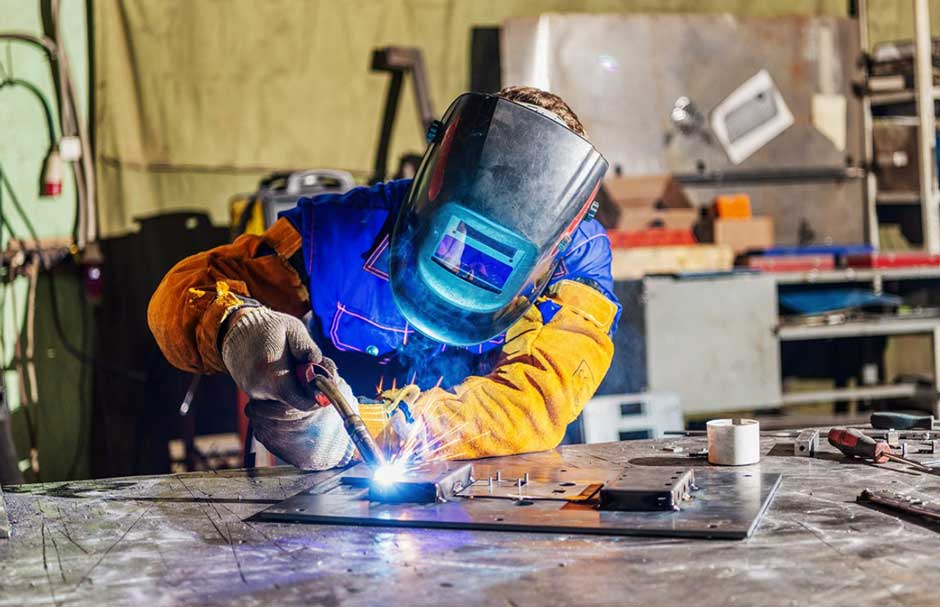HOW TO CHOOSE THE RIGHT WELDING PROCESS FOR YOUR INDUSTRIAL PROJECT

Welding is an essential procedure in several industries. However, picking the best welding technique for the job at hand is crucial. Evaluating these factors will assist you in selecting the best welding technique. It will also guarantee the best possible outcomes.
Different Industrial Welding Techniques
Numerous welding techniques are available. Each has special benefits and may be appropriate for particular uses. An industrial welding company can guide you in selecting the right method for your specific project. Consider these common ones:
TIG
This is an accurate and adaptable joining technique. It produces the welding arc through a non-consumable tungsten electrode. It is the best choice for tasks requiring thin materials or complicated designs. Good examples are jewelry, bike frames, and aviation parts.
MIG
This is one of the most popular techniques for manufacturing. Passing a wire electrode through a welding cannon produces an electric arc between the wire and the metal. The arc’s heat melts both materials. They form a solid bond when they cool.
This method is well-liked because it is quick and simple. It is also adaptable for welding a variety of materials. It is prevalent in sectors including building, aerospace, and automobiles.
Laser
The laser beam’s concentrated heat enables higher welding speeds, which shortens production times and boosts output. This saves additional time and money because laser welding’s precision reduces the requirement for post-work procedures like grinding or polishing. This is crucial for sectors that need to maintain high standards of cleanliness and handle sensitive components, such as the manufacturing of medical devices.
The Material Being Welded
Think about the material’s composition and characteristics, including its conductivity, strength, and thickness. For instance, Gas Metal Arc Welding welds mild steel better. Conversely, TIG welding is perfect for stainless steel and aluminum.
The Material Thickness
Choosing a welding procedure requires careful consideration of the material’s thickness. Stick or flux-cored arc welding, which have higher penetration capabilities, may be more advantageous for thicker materials. TIG welding and other precise heat management techniques are necessary for thinner materials to prevent warping or burning through.
Quality and Appearance
Some welding techniques provide welds of superior quality with less spatter. Industrial laser welding services are particularly valuable for producing visually appealing results and neat, sparsely spattered welds. The process eliminates the necessity for the welding tool and materials to come into direct contact with one another.
This is crucial in lowering the possibility of contamination or damage—an essential factor in sectors like the production of medical devices, where delicate parts and stringent hygiene regulations are necessary.
Speed and Effectiveness
Take into account the particular needs of the welding project. This includes the required heat input, deposition rate, and welding speed. For instance, TIG welding offers fine control. It suits applications that demand high-quality welds. Alternative welding processes, such as Flux-Cored Arc Welding, offer high deposition rates. They are appropriate for high-speed production situations.
Conditions of the environment
Examine the conditions of the environment where welding will occur. Wind, dampness, and restricted spaces can influence your choice. For example, Shielded Metal Arc Welding (SMAW) is better in some environmental circumstances. This is because it is portable and ideal for outdoor and distant areas.
Cost
Cost factors, such as personnel, consumables, and equipment expenditures, should always be taken into account when calculating ROI. Stick welding may be less expensive initially. However, it may not be as effective over time as more sophisticated techniques like automated MIG or TIG welding. Working with a welding company like Micro Weld that offers affordable solutions is crucial to satisfy your financial restrictions as well as technical criteria.
The Takeaway
There isn’t a single welding procedure that works for all manufacturing. Assessing the unique objectives and requirements of each project is essential in order to choose the best approach for the greatest outcomes. Knowing the advantages and disadvantages of each procedure will help you make an informed choice that will eventually increase your output.


